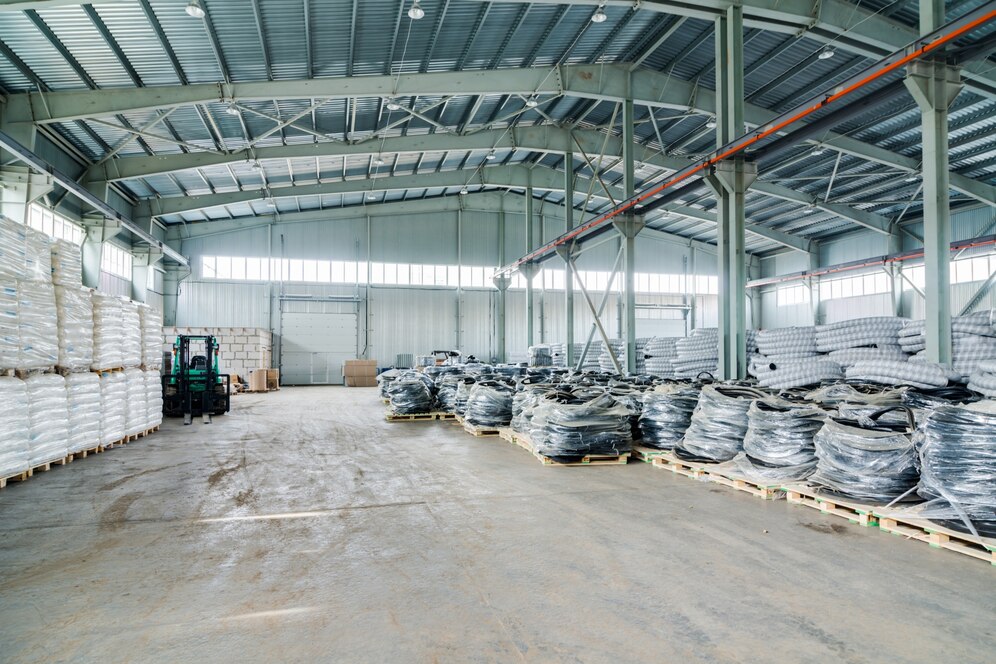How to Maximise Space in Industrial Sheds

Industrial sheds are versatile structures used for a variety of purposes, from storage and manufacturing to workshops and warehousing. Efficiently utilising the available space in an industrial shed can significantly enhance productivity and functionality. Here are some practical tips on how to maximise space in industrial sheds.
1. Plan Layout Strategically
Start by planning the layout of your industrial shed. Consider the specific needs of your operations and how you can arrange equipment, workstations, and storage areas to optimise workflow. Use zoning techniques to designate areas for different activities. For instance, place heavy machinery and manufacturing areas on one side and storage and office spaces on another. A well-thought-out layout minimises movement and maximises efficiency.
2. Utilise Vertical Space
One of the most effective ways to maximise space in an industrial shed is to utilise vertical space. Install tall shelving units, racks, and mezzanines to take advantage of the height of the shed. By storing items vertically, you free up floor space for other uses. Ensure that the shelving and racks are sturdy and can safely support the weight of stored materials. Additionally, use wall-mounted storage options for tools and smaller items.
3. Implement Efficient Storage Solutions
Invest in efficient storage solutions like storage racks nz, tailored to your needs. Modular storage systems, pallet racking, and cantilever racks are excellent options for organising different types of materials. Label shelves and bins clearly to facilitate easy access and inventory management. Consider mobile storage units that can be moved around as needed, providing flexibility in space utilisation.
4. Optimise Workflow and Accessibility
Design your shed’s layout to optimise workflow and accessibility. Position frequently used equipment and materials in easily accessible locations. Create clear pathways and ensure that aisles are wide enough for safe movement of people and machinery. Arrange workstations in a logical sequence to minimise unnecessary movement and increase efficiency. Properly planned workflow and accessibility contribute to a more organised and productive workspace.
5. Use Multi-Functional Furniture and Equipment
Multi-functional furniture and equipment can help save space and enhance versatility. For instance, workbenches with built-in storage, foldable tables, and stackable chairs can provide more utility without occupying additional space. Consider machinery that performs multiple functions or can be easily reconfigured for different tasks. This approach reduces the need for multiple pieces of equipment and frees up valuable floor space.
6. Implement Lean Principles
Applying lean principles can greatly improve space utilisation in industrial sheds. Lean methodology focuses on eliminating waste and improving efficiency. Analyse your operations to identify any unnecessary steps, excess inventory, or redundant processes. Streamline these aspects to reduce clutter and make better use of available space. Regularly review and adjust your processes to maintain optimal space utilisation.
7. Install Overhead Storage
Overhead storage is another effective way to maximise space. Install ceiling-mounted racks or hoists to store infrequently used items, seasonal materials, or bulky equipment. This frees up floor and wall space for more critical operations. Ensure that overhead storage solutions are securely anchored and can safely support the weight of stored items.
8. Create Designated Zones
Creating designated zones for specific activities can enhance organization and efficiency. For example, establish separate areas for receiving and shipping, assembly, quality control, and storage. Clearly marked zones help keep the shed organised and prevent cross-contamination of materials and tools. This zoning approach also makes it easier for employees to find what they need and perform their tasks more efficiently.
9. Maintain Regular Maintenance and Cleanliness
Regular maintenance and cleanliness are essential for maximising space. Keep the shed clean and free of debris to prevent clutter from accumulating. Implement a routine maintenance schedule to ensure equipment and storage systems are in good condition. Well-maintained spaces are more functional and safer, contributing to better space utilisation.
10. Consider Expansion Options
If your industrial shed is reaching its capacity, consider expansion options. Adding an extension or mezzanine level can provide additional space without the need for a completely new structure. Evaluate the feasibility and cost-effectiveness of expansion based on your current and future needs. Properly planned expansions can significantly enhance the functionality and capacity of your shed.
Conclusion
Maximising space in industrial sheds requires careful planning, strategic layout, and efficient storage solutions. By utilising vertical space, optimising workflow, and maintaining a clean and organised environment, you can make the most of your shed’s capacity. Implementing these tips will help you create a more productive, efficient, and safe workspace that meets the demands of your operations.

